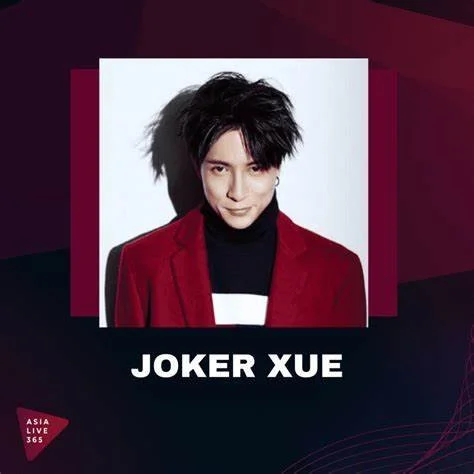Over the last few months, riders around the world have been sharing the same unsettling story:
You order an Uber.
The app says your driver has arrived.
You’re standing at the pin… but there’s no car in sight (potentially sitting in an unassigned car)
The driver doesn’t answer calls or only messages you from some random side street.
Eventually, you get frustrated, you cancel… and you get hit with a cancellation fee.
That pattern has been reported in Reddit threads, social media posts, and online forums, with riders alleging that some drivers are intentionally hiding or not approaching the pickup point so that frustrated passengers cancel and trigger a fee.(Reddit)
Let’s break down how this scam works, what Uber’s own rules say about cancellation fees, and most importantly, exactly how to dispute the charge and who to contact.
What Is the “Hiding Driver” Scam?
The basic idea is simple:
Driver accepts your trip.
They drive close enough (or spoof their location) so the app marks them as “arrived.”
They don’t actually pull up to the clearly visible pickup spot—they sit around a corner, in another lane, or in a random parking lot.
They ignore calls or give vague directions like “walk over to me” instead of meeting you where the pin is.
You eventually cancel or the driver waits long enough to trigger a no-show cancellation fee.
Riders and even some drivers have talked about this behavior online, describing drivers who let the clock run so they can earn a quick cancellation payout while burning little or no fuel.(Reddit)
Recent viral clips and posts summarize it bluntly:
“Uber drivers are reportedly avoiding passengers so that rides get canceled, allowing them to earn payment while saving on fuel.” (X (formerly Twitter))
Is every driver doing this? No, most drivers are just trying to work. But the scam is common enough that you should know how it works.
How Uber’s Cancellation Fees Actually Work
Uber’s official help pages explain when a cancellation or no-show fee can be charged. Key points for riders (these can vary slightly by market, but the structure is similar):(Uber)
1. Rider-initiated cancellations
For most economy rides like UberX, UberXL, Comfort, and Pet:
For premium rides (Uber Black, SUV, Premier), the grace period is typically 5 minutes before a fee can be charged.(Uber)
2. Driver-initiated cancellations (no-show fees)
If the driver cancels after waiting at your pickup point for a certain time, a fee can also be charged:
That’s the window some scammers are targeting: they “arrive” in the app, hide somewhere nearby, then wait out the timer.
3. How much is the fee?
Uber doesn’t publish a single global number. Instead, it says:
“Cancellation fees vary by location and may increase depending on how busy it is. In some cases, your cancellation fees will be based on how far the driver has already driven, how long it took the driver to arrive at your pickup location, and the time your driver has been waiting.” (Uber)
In practice, riders commonly report roughly $3–$10 in cancellation or no-show fees in North America, with some airport or premium trips on the higher end.(One Mile at a Time)
4. The important protection in Uber’s own rules
This is the part most riders don’t know, and it’s crucial:
“A cancellation fee won’t apply if we detect that your driver hasn’t made progress to your pickup location or if your driver is 5 or more minutes late.” (Uber)
In theory, if a driver sits in one place far from your pin, Uber’s system should flag that and not charge you. But GPS isn’t perfect, and scams exploit these edge cases—so you still need to know how to push back.
How the Scam Plays Out in Real Life
From rider reports, a “hiding driver” scam usually looks like this:(Reddit)
ETA jumps around. The app says the driver is 2 minutes away, then 8, then 13, then back to 4 while they loop around blocks instead of actually arriving.
The driver marks “arrived” even though they’re not at the clear pickup point (airport queue, hotel lobby entrance, rideshare zone, etc.).
They send a message like “I’m over by [random corner/parking lot], you have to walk to me,” sometimes in unsafe or inconvenient spots.
They ignore calls or delay responses, letting the timer tick.
You eventually cancel or the driver cancels after the wait threshold and a cancellation fee hits your account.
Some riders assume there’s nothing they can do. That’s exactly what a scammer is banking on.
What To Do Before You Cancel
Here’s your playbook if your driver seems to be playing games:
1. Stay at the official pickup pin
Stand where the app tells you, especially at airports, stations, or busy venues. That’s your best protection if you need to dispute the fee.
2. Call or message through the app
Politely say: “I’m at the pickup pin where the app shows. Can you pull up to this exact spot?”
If they insist you walk somewhere unsafe or weirdly far away, respond once more in-app so there’s a written record.
3. Screenshot everything
Take screenshots of:
Those images are gold if Uber questions your dispute.
4. Don’t rush to cancel
If it’s safe to do so and you’re not in an emergency, try to wait until:
That lines up with Uber’s own rule that no cancellation fee should apply if the driver hasn’t made progress or is 5+ minutes late.(Uber)
If you must cancel quickly for safety or time reasons, still dispute the fee afterward (more on that below).
How To Dispute an Uber Cancellation Fee (Step-by-Step)
Uber actually has a dedicated flow for this in the app.
Option 1 – Using the Uber app (recommended)
Open the Uber app.
Tap your profile icon (top right), then tap “Trips.”
Find and select the canceled trip that shows the cancellation fee.
Tap “Help” or “Report an issue.”
Choose something like “Dispute my cancellation fee” or “Review my cancellation fee”, wording varies by region but these options route to the same team.(Uber)
In the text box, clearly explain:
That you were at the pickup location on time
The driver never appeared or stayed far away
They were marked “arrived” but the car icon never came to the pin
Any safety concerns if they told you to meet in a dark or isolated area
Attach screenshots if your app allows it.
Uber’s own help article explicitly invites riders to request a review if they think the cancellation fee was wrong or if a ride was never taken.(Uber)
Option 2 – Through Uber’s website
Go to help.uber.com and log in.
Navigate to Riders > Cancellations.(Uber)
Look for “Review cancellation fee” or “I was charged for a ride I did not take.”(Uber)
Fill out the form with the same details and submit.
Option 3 – Call Uber support via the app
Uber has 24/7 phone support, but the official path is still through the app:(Uber)
Open the app and go to Help.
Choose your issue (e.g., Trip issues and refunds → Canceled trip).
If phone support is available for your region and issue type, you’ll see an option like “Call support.”
You’ll be connected to a live agent; explain that your driver never showed and the fee should be removed.
Uber also advertises 1-833-USE-UBER (1-833-873-8237) as a U.S. phone line to request rides without the app, but notes it is not a general customer-service line. For billing disputes, you’ll still be directed to the app or website help center. (Uber)
Option 4 – If Uber refuses to fix it
If you’re certain the charge is fraudulent and Uber won’t budge:
Contact your bank or card issuer.
Explain it as an incorrect or disputed charge for a service you did not receive (driver never showed).
You can also file a complaint with your local consumer-protection agency or, in the U.S., with the FTC, especially if you see a pattern of unfair billing practices.(AP News)
Who You Can Contact, In Plain English
Here’s the quick reference list:
Uber Rider Support (primary channel)
In the Uber app: Trips → select trip → Help → Dispute / Review cancellation fee.(Uber)
On the web: help.uber.com → Riders → Cancellations → Review cancellation fee / I was charged for a ride I did not take.(Uber)
Uber Phone Support (through the app)
Your Bank / Card Issuer
Consumer-Protection Agencies
How To Protect Yourself From This Scam Going Forward
A few practical moves to reduce your chances of getting played:
1. Use the Uber PIN feature where available
Some riders use the PIN verification feature, which prevents the trip from properly starting until the driver enters a code shown on your phone. While this doesn’t stop a driver from hiding, it does prevent them from starting a trip as if you’re already in the car.(Reddit)
2. Always meet at well-lit, official pickup zones
Especially at:
Airports
Stadiums
Concerts
Transit stations
Standing at the clearly marked rideshare zone makes your dispute a lot stronger if things go sideways.
3. Watch the map like a hawk
If the car icon never actually comes to your pin but they’re marked “arrived,” treat that as a red flag.
If they keep driving random loops instead of closing the distance, assume they might be fishing for a cancellation.
4. Be firm but polite
If the driver insists you walk far from the pin to meet them—especially at night or in sketchy areas, reply in-app:
“I’m at the pickup pin shown in the app. Please meet me here as required by Uber’s policies.”
That message becomes part of your digital “receipts.”
The Bigger Picture
Why would a driver risk their account for a few bucks?
Forums and driver discussions hint at the underlying tension: many drivers feel underpaid after Uber’s repeated fare cuts and rising fuel and maintenance costs. Some openly admit that gaming cancellation/ no-show fees seems like “the only way to make it worth it” in their city.(One Mile at a Time)
That frustration doesn’t justify scamming riders or putting them in unsafe situations. But it does explain why this behavior is popping up more often in 2024–2025 across multiple countries.
The good news:
Uber’s own written policies give you strong footing to fight back.(Uber)
Recent policy updates (like clearer grace periods and better rules around drivers making progress toward the pickup) suggest the company knows there’s a problem and is tweaking systems in response to rider complaints.(The Sun)
Final Thought
If a driver ever “ghosts” you while marked as arrived, don’t just eat the cancellation fee:
The more riders push back with clear evidence and use the dispute tools, the harder it becomes for bad actors to keep running this scam in the shadows.





















